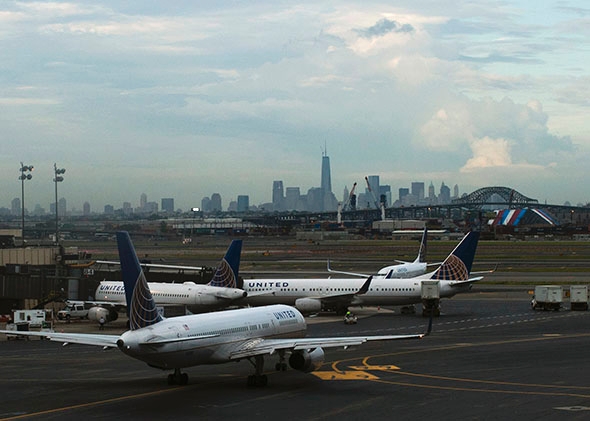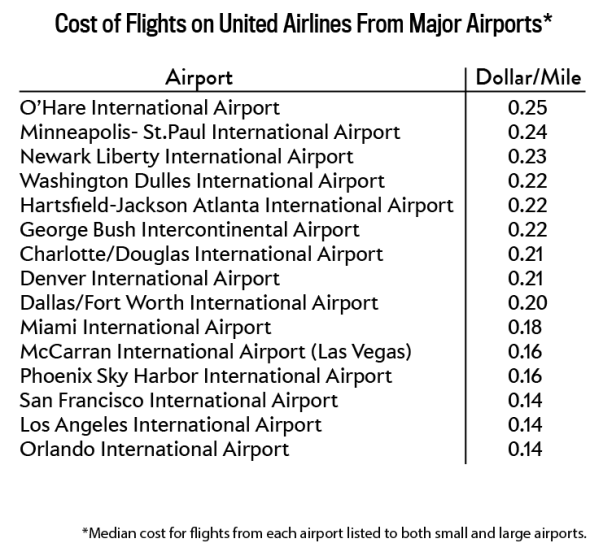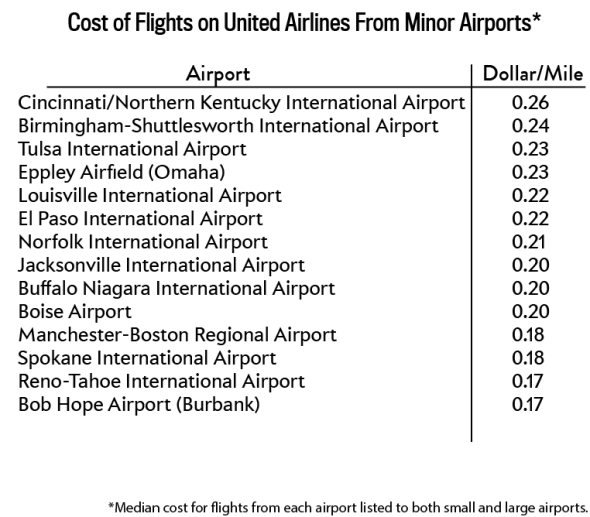Mo Money Mo Miles
United Airlines’ new frequent flier scheme creates a perverse incentive for business travelers.

Photo by Eduardo Munoz/Reuters
Last month, United Airlines announced major changes to its frequent flier program. Following a similar move by Delta, the airline will (starting in March 2015) offer its travelers frequent flier miles based on dollars spent rather than miles flown. The precise formula depends on your status: Hoi polloi fliers will get five frequent flier miles per dollar spent, while holders of United’s top-tier 1K status will get 11 miles per dollar. Of course, the new formula also benefits people, no matter the eliteness of their status, who pay more for their tickets: first- and business-class travelers, and people who buy at the last minute.
But you don’t care about those people. You want to know: How does this affect me? Just how many miles will United be screwing me out of?
United, it turns out, has created a perverse incentive for business travelers: If you spend more, you get more miles. But we’ll get to that later. First, our methodology. We examined the effects of United’s new system by scraping the airline’s website for fares on several hundred itineraries, ranging from direct flights between the hubs to a hop-with-a-stop from Norfolk, Virginia, to Jacksonville, Florida. For each pair of cities, we searched for both Friday-to-Sunday and Tuesday-to-Thursday fares, to simulate the difference between a family weekend and a business trip. For each itinerary, we averaged prices for four different weeks, to smooth out fluctuations.
Here’s what we found:
The thickest diagonal line on the plot represents five miles per dollar (or 20 cents per mile), the rate of exchange United will switch to next March. The dots above that line are itineraries that will earn you more miles under the new system than under the old one. The dots below that line are itineraries that will earn you fewer miles.
The first thing to notice is that there are dots all over this plot; a lot are above the five-miles-per-dollar line, and a lot are below. Of the 748 itineraries we priced out, 359, nearly half, would earn more miles under the new system than the old. So the rule change isn’t really a takeaway by United—it’s more like a nudge to get some customers to see the value in buying pricier tickets. For many flights, the new rules won’t represent much of a change at all. Among the flights we checked, the median itinerary had a dollars-per-mile cost of 19.6 cents. That’s an Atlanta-to-Denver round trip, which would earn about 2,393 miles under the old system and 2,345 miles—five times the $469 ticket price—after the switch.
Which fliers will get the best results from the new system, relative to others? Keep in mind that you’ll “do better” at accruing miles if you pay more for your ticket, so if you like money more than miles, you might not mind being on the wrong side of the chart. That noted, here are our tips for coming out on top in United’s new frequent flier landscape.
1. Be from a small city. The median cost per mile for trips including big cities was 19 cents. For trips joining two smaller cities, it was 21 cents. So country mouse travelers who endure the pain of making a tight connection at O’Hare or Denver will now get the balm of enjoying (slightly) greater frequent flier rewards than their big-city counterparts.
2. Don’t be from California. Flights out of Los Angeles and San Francisco typically cost less than 15 cents a mile, so those fliers will lose substantial mileage under the new system. Of the five airports with the highest dollars-per-mile figures, on the other hand, four are east of the Mississippi, and the exception, Minneapolis-Saint Paul, misses by only a couple of miles. Among the small airports, Burbank and Reno-Tahoe give you the fewest frequent flier miles per mile traveled. United’s hub at O’Hare had the most expensive flights: At 25 cents per mile, Chicago fliers are paying close to twice as much per mile as people traveling from SFO or LAX. Painful as it is, those extra costs will help Chicagoans rack up more miles.
3. Day of the week doesn’t matter. We thought this would make a big difference, maybe because one of us is old enough to remember the days when the Saturday night stayover could be the difference between a ruinously expensive ticket and a cut-rate fare. But in our sample the typical dollars-per-mile ratio was almost identical for weekend and midweek travelers (19.8 cents for weekend trips, 19.3 for midweek itineraries).
4. Keep your status high. The number of miles you accrue won’t change radically on most economy flights—unless you have premium status on United. Fliers with Silver status, the lowest loyalty tier, get seven miles per dollar spent. On almost 80 percent of the 748 itineraries we tested, a Silver flier will get more miles in the new system than under the old one. Go all the way up to 1K status, with its 11-miles-per-dollar rate, and we found just six flights where the new rules are worse than the old.
Now comes the data dump. We ranked 15 big-city airports by flight cost. For each airport, you’re seeing the median dollars-per-mile ratio of flights involving that city. If the number is less than 20 cents, it means most flights will earn fewer miles under the new frequent flier system. A cost higher than 20 cents means most flights will now earn you more miles. We averaged prices for four weeks between late July and August, to minimize week-to-week fluctuations.

Chart by Ben Blatt
And here’s the same information for 14 smaller cities.

Chart by Ben Blatt
This new system will force miles-loving passengers to make a hard decision about how they travel: Do I get a cheaper ticket, or do I spend more to earn miles I can use down the road? In the business world, the biggest losers likely won’t be the fliers themselves, but the people who handle corporate travel reimbursement. Imagine the nonstop migraine festivals their lives are going to be, now that every expensive ticket raises the question: Could Marie in sales really not commit to that ticket until the week before the flight, or did she want to charge the company the highest price so she could collect the most miles possible?
If you fly for work, look forward to crankier accountants and more restrictions on your travel choices, as employers do everything they can to squelch the incentive United just created to spend more company money on your personal miles. Maybe this was the plan all along: to create a powerful incentive for the most profligate class of travelers to throw the airline even more money.